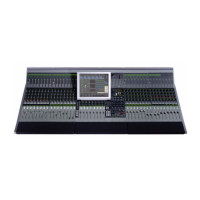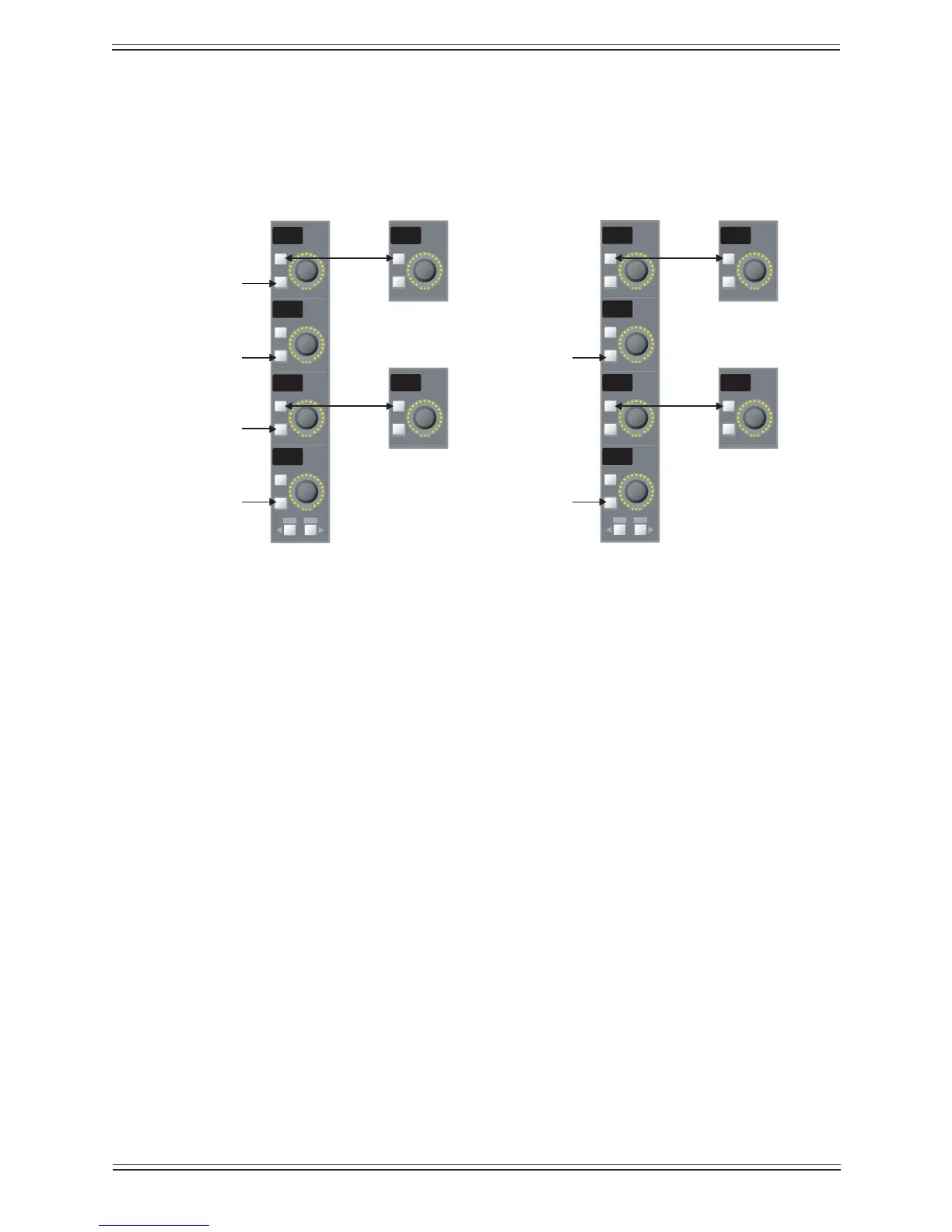Euphonix Max Air Mixing Console Operation Manual Channels and Strips
102
EQ5.3.3
Each channel has a four-band, parametric equalizer. Press the EQ Knobset Select key to
display the EQ controls on the knobs.
On
On
On
On
Select
Select
Select
Select
Copy Paste
HiF
HiG
LoF
LoG
Page 1
Band in/out
Peak/Shelf
Band in/out
Peak/Shelf
On
On
On
On
Select
Select
Select
Select
Copy Paste
HmF
HmG
LmF
LmG
On
Select
On
Select
HiQ
LoQ
Page 2
Band in/out
Band in/out
On
Select
On
Select
HmQ
LmQ
EQ knobsetsFigure 5-11
Each parametric EQ band has two knobs: one shared between frequency and Q and
another for gain. Press the upper key to the left of any of the frequency knobs to toggle
between Q and frequency. Use the gain knob to adjust the gain for that band. The lower
key to the left of the gain knob switches that band In/Out.
The four bands are identical (20.5 Hz – 21 kHz) except the HiF and LoF bands can be
switched between peak or shelf lters. Press the lower of the keys to the left of the HiF
or LoF knob to toggle between shelf (no light) and peak (key lights green).
The gain can be adjusted in 1/8 dB increments in a range from -24 to +24 dB. As the gain
is changed from 0, the LEDs light dimly from the center LED in the direction turned
(clockwise = boost); the level is indicated by a bright LED.
Q can be adjusted in the range from 0.2 to 12 (higher number corresponds to narrower
bandwidth). At a given Q setting, changing the gain affects the bandwidth slightly: the
bandwidth decreases as gain increases. This creates a wider area of boost/cut at low gain
and allows a more natural sound as gain changes without altering the Q. At full boost or
cut, the bandwidth is measured 3 dB down from the center frequency.
Since Q and Frequency share the same knob, both parameters are indicated on the knob
LEDs: Frequency is indicated by a bright LED at its proportional position from rst to
last LED. For example, 10 kHz would be approximately in the middle. Q is indicated by
dim LEDs extending to either side of the frequency LED.

